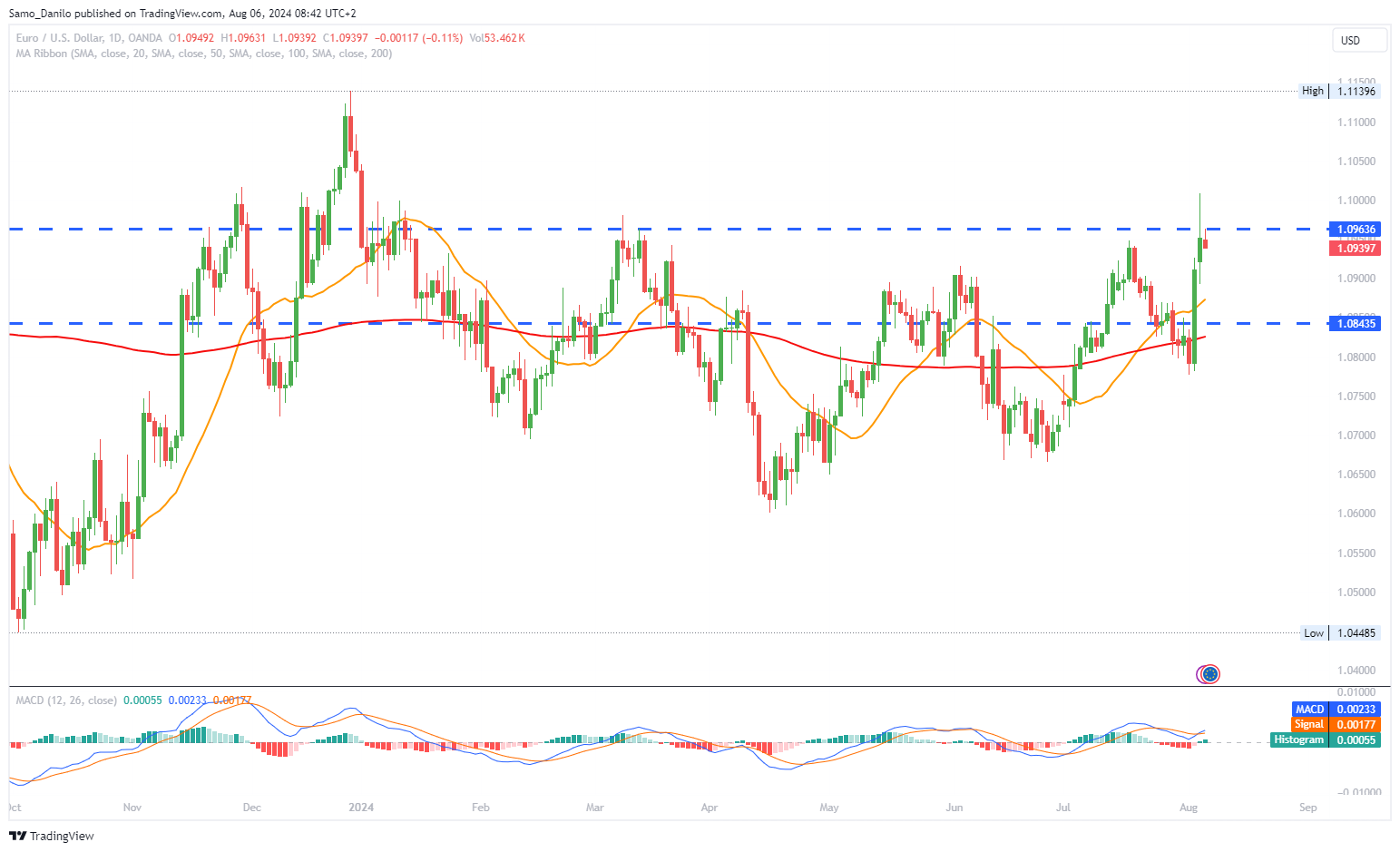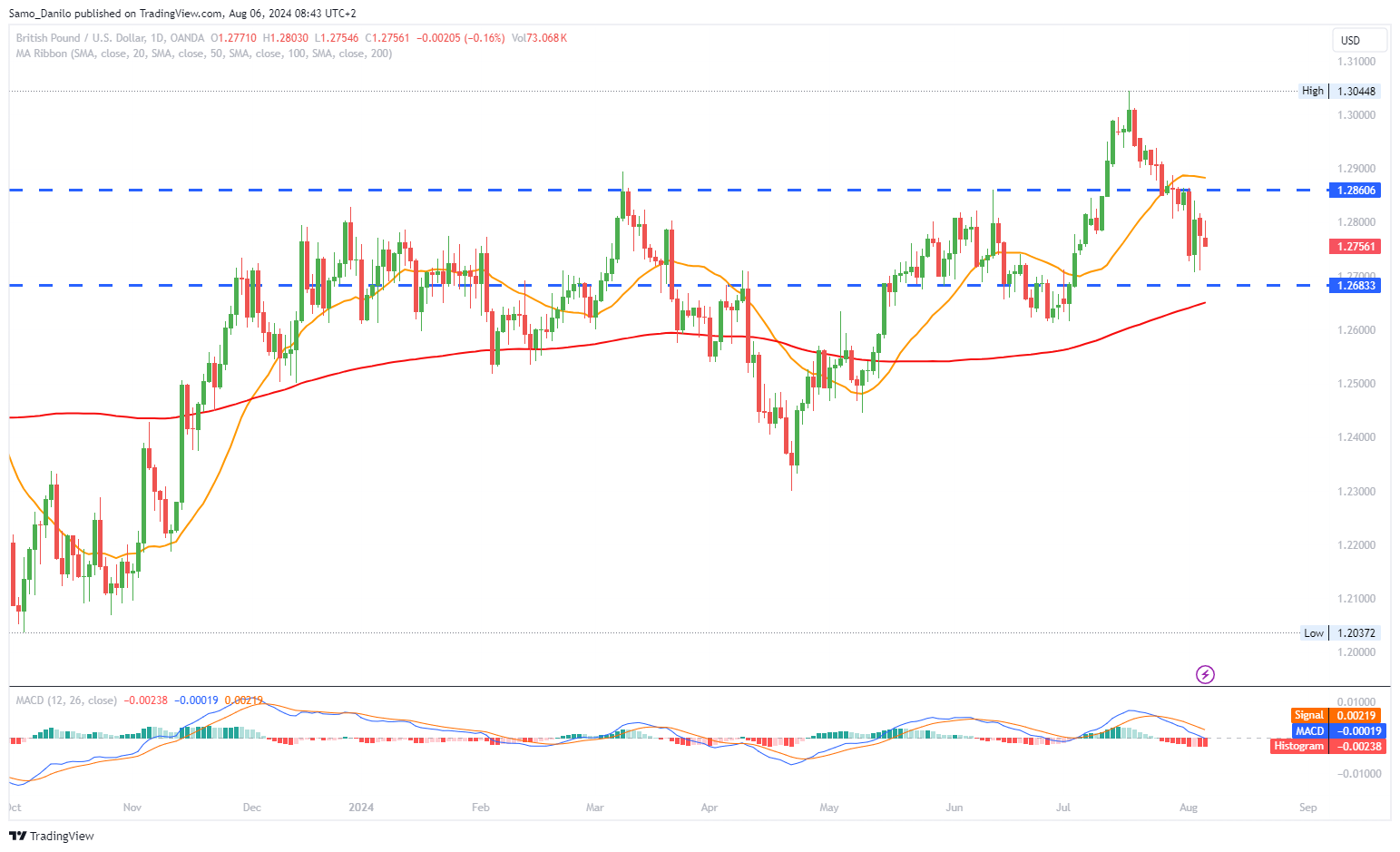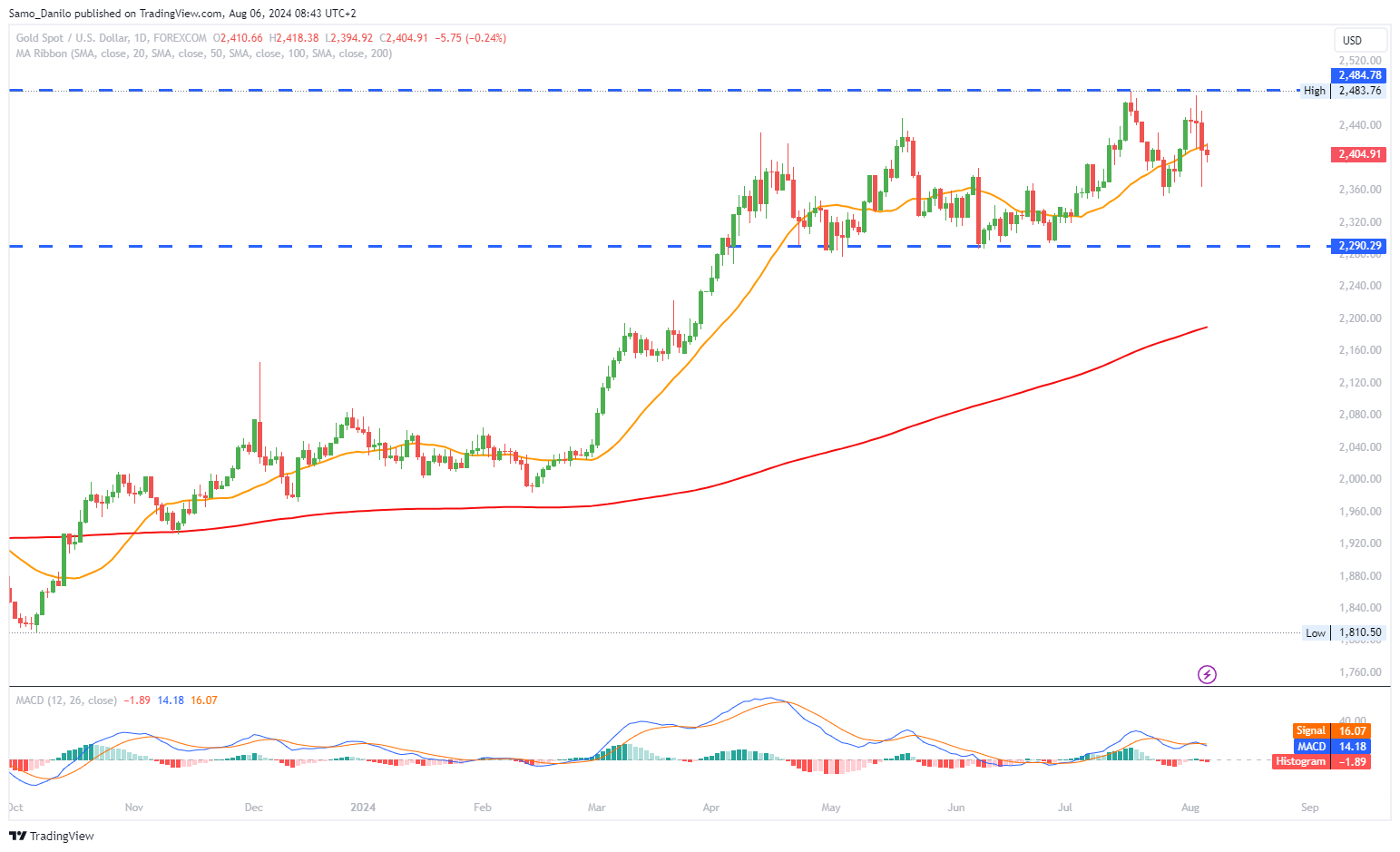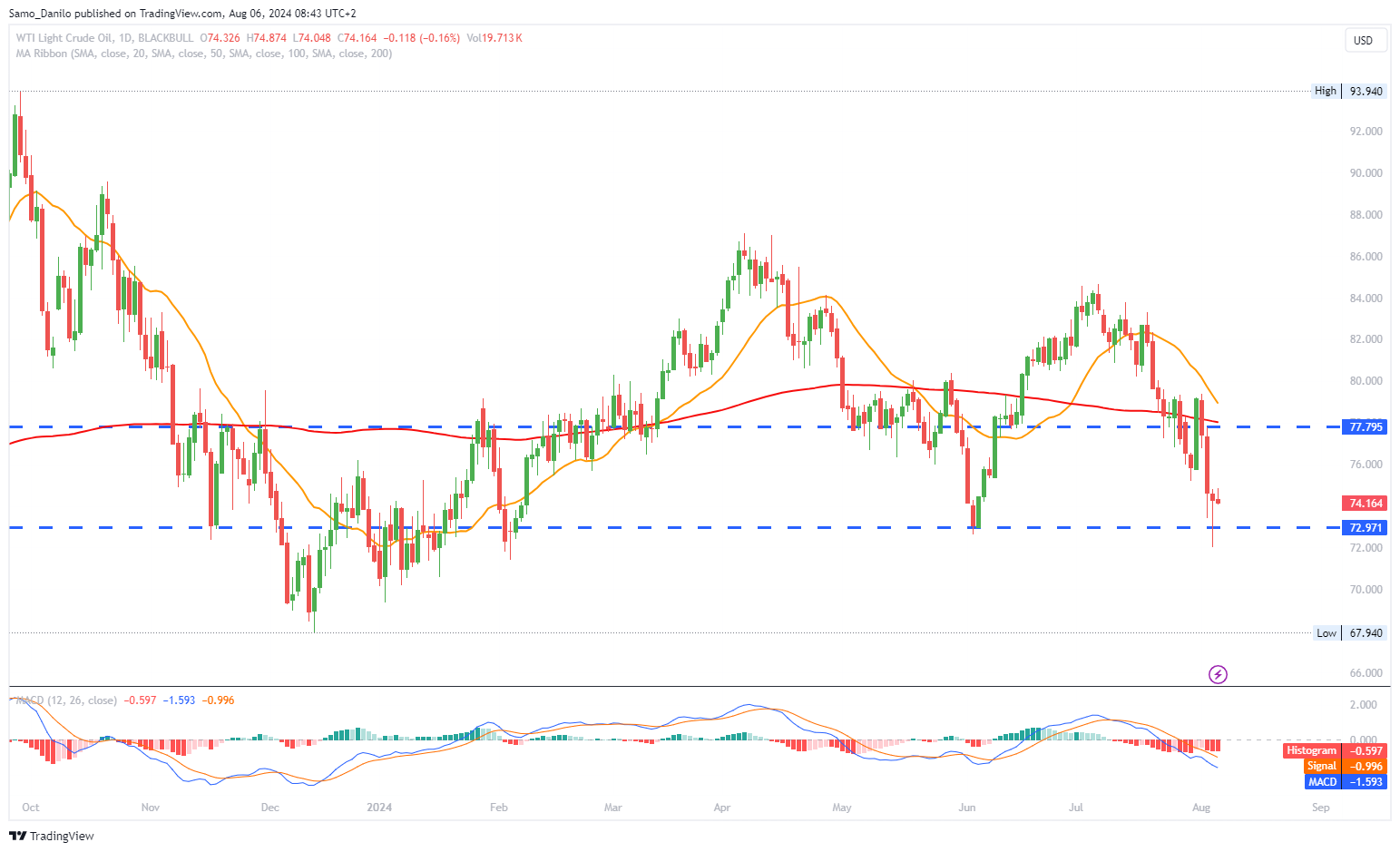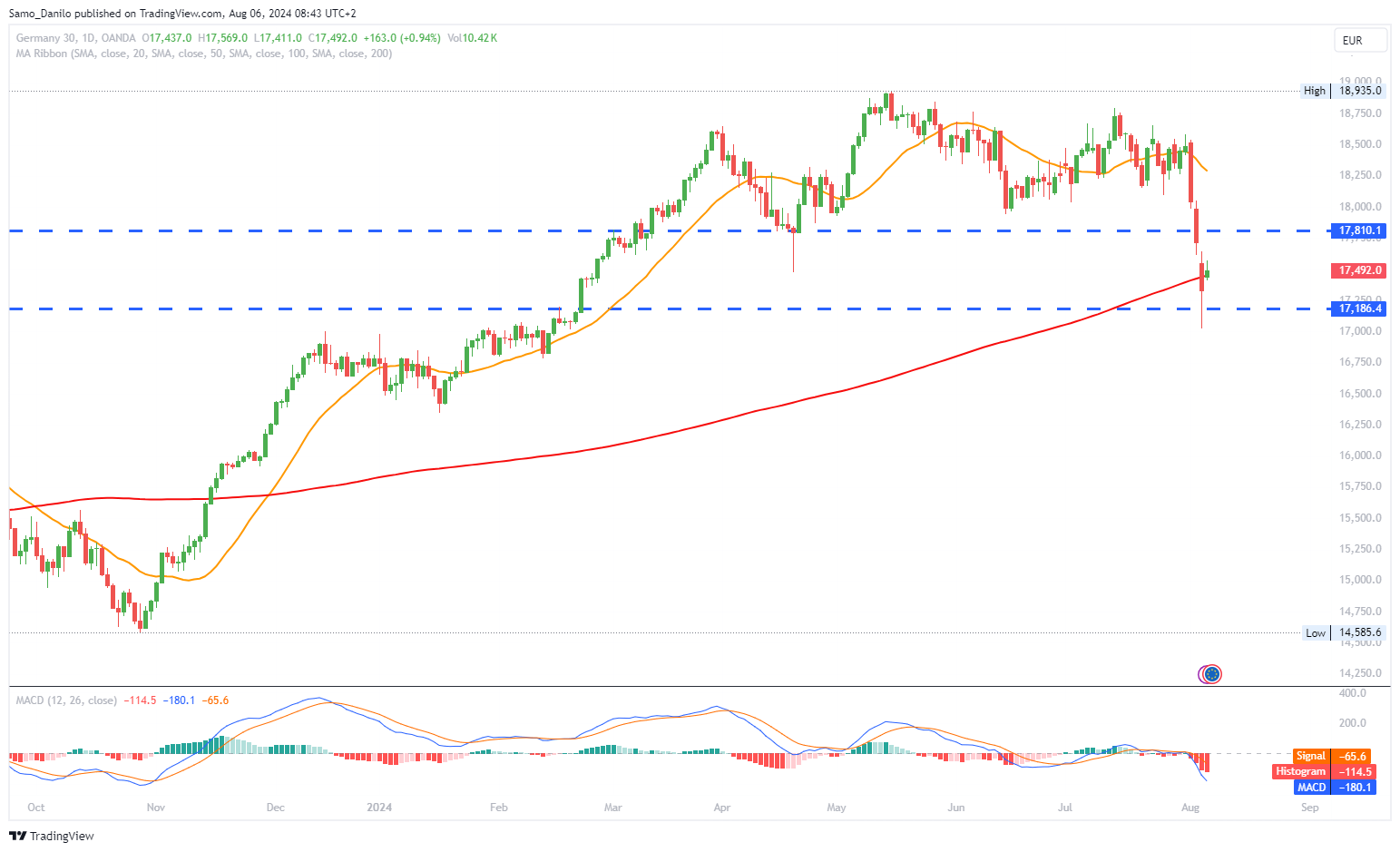EURUSD
- EUR/USD Performance: EUR/USD sought higher ground on Monday, briefly climbing to 1.1000 before settling back into a familiar range near 1.0950, failing to set a new high for 2024.
- Market Sentiment: A broad sell-off spread across financial markets on Monday as investors grew concerned about a potential recession in the US economy.
- Fed Commentary: Chicago Fed President Austan Goolsbee noted on Monday that the Fed would respond if economic or financial conditions deteriorate.
- US ISM Services PMI: On a positive note, the US ISM Services Purchasing Managers Index (PMI) came in stronger than expected, rising to 51.4 in July from 48.8 in June, as reported by the Institute for Supply Management (ISM).
- Eurozone Retail Sales: Traders will look to the release of Eurozone Retail Sales data, which is expected to ease to 0.1% YoY in June, for further cues.
Closing statement: EUR/USD remains range-bound as market participants balance recession fears in the US with stronger-than-expected ISM Services PMI data. Chicago Fed President Goolsbee's comments suggest potential Fed action if conditions worsen, adding to market uncertainty. Upcoming Eurozone Retail Sales data will be closely watched, with any deviation from expectations likely to influence the pair's direction. Traders should remain cautious as they navigate these mixed signals.
GBPUSD
- GBP/USD Performance: GBP/USD began the new trading week with a sharp drop on Monday, plunging to familiar lows just above 1.2700 before recovering to end the day close to 1.2800.
- Market Sentiment: Early trading saw a reversal as markets piled into the US Dollar following more US data coming in below expectations.
- Technical Analysis: The downward momentum is supported by the Relative Strength Index (RSI), which is below the 50-midline at around 44.0, favoring sellers for now.
- Fed Rate Expectations: According to the CME’s FedWatch Tool, rate markets are pricing in nearly 85% odds of a double-cut from the Fed on September 18th for 50 basis points after recent US data showed weakness on Friday and mixed results on Monday.
- Economic Calendar: The rest of the trading week features a light economic data docket, giving markets some breathing room to digest current positioning.
| SMA (20) | Rising |
|
|
| RSI (14) | Falling |
|
|
| MACD (12, 26, 9) | Falling |
|
|
Closing statement: GBP/USD experienced a volatile start to the week, with initial declines followed by a recovery. The pair remains pressured by weak US data and technical indicators favouring the downside. Market expectations for a significant Fed rate cut in September add to the uncertainty. With a relatively light economic calendar ahead, traders will have time to reassess their positions and react to any new developments.
GOLD
- Gold Price Movement: Gold price is consolidating its previous swift rebound near the $2,405 region early Tuesday as traders digest Monday’s volatile trading.
- Market Dynamics: Monday’s sell-off in gold, despite broad risk-aversion, is likely due to investors locking in gains to cover losses elsewhere. Global stock markets were in turmoil amid escalating Middle East tensions and fears of a US economic slowdown following Friday's weak jobs report.
- Fed Commentary: San Francisco Fed President Mary Daly stated early Tuesday that none of the labor market indicators she monitors are currently flashing red, though she is observing them carefully.
- Geopolitical Tensions: Diplomatic efforts are underway by the US and Arab nations to de-escalate the tensions between Iran and Israel that have been intensifying since Wednesday.
- Trader Sentiment: As the Middle East geopolitical situation remains delicate, traders are closely watching developments, refraining from placing new positions in gold.
| SMA (20) | Slightly Rising |
|
| RSI (14) | Slightly Falling |
|
| MACD (12, 26, 9) | Slightly Rising |
|
Closing statement: Gold prices are consolidating recent gains near $2,405, reflecting the cautious sentiment among traders amid ongoing Middle East tensions and mixed US economic signals. The recent sell-off, despite risk-aversion, suggests profit-taking to offset losses in other assets. With the geopolitical situation remaining fragile and key labour market indicators under scrutiny, traders are likely to stay on the sidelines, waiting for clearer signals before making new moves in gold.
CRUDE OIL
- Price Movement: West Texas Intermediate (WTI) US crude oil prices edged higher during the Asian session on Tuesday, recovering further from a multi-month low region touched the previous day.
- Supply Concerns: The risk of a broader Middle East conflict continues to fuel concerns about potential supply disruptions from the key oil-producing region.
- Demand Worries: The intraday positive move lacks strong bullish conviction due to ongoing worries about an economic downturn and slowing demand in China, the world’s top oil importer.
- Market Sentiment: Given the mixed fundamental backdrop, it is prudent to wait for strong follow-through buying before confirming that oil prices have bottomed out in the near term.
- Geopolitical Influence: Fresh geopolitical developments surrounding the ongoing conflicts in the Middle East will continue to influence crude oil prices. Additionally, the American Petroleum Institute (API) report on US oil inventory might provide some impetus to the commodity.
| SMA (20) | Falling |
|
|
| RSI (14) | Slightly Falling |
| |
| MACD (12, 26, 9) | Falling |
|
|
Closing statement: WTI crude oil prices are showing signs of recovery from recent lows, driven by concerns over Middle East supply disruptions. However, persistent worries about a global economic downturn and reduced demand from China are tempering bullish sentiment. Traders are advised to wait for more decisive buying signals before confirming a near-term bottom in oil prices. Geopolitical developments and the upcoming API report on US oil inventories will likely play a critical role in shaping oil market dynamics.
DAX
- Banking Sector: On Monday, Commerzbank and Deutsche Bank shares slid by 2.42% and 2.58%, respectively, driven by concerns that lower ECB and Fed interest rates could impact on their net interest margins.
- Services PMI: Finalized German and Eurozone Services PMI numbers attracted investor interest. The Eurozone Flash HCOB Services PMI dropped from 52.8 in June to a four-month low of 51.9 in July, consistent with the Flash 51.9. The final survey indicated accelerated input cost inflation.
- Factory Orders: Germany’s factory orders surged sharply in June, according to official data published by the Federal Statistics Office on Tuesday, suggesting a recovery in the German manufacturing sector.
- Labor Market: The resilient labor market has been crucial to the German economy. However, economists now anticipate a German recession in Q3 2024.
- Earnings Reports: Bayer and Zalando SE are among the major companies releasing earnings reports on Tuesday. Disappointing results and pessimistic outlooks could negatively impact the DAX.
| SMA (20) | Slightly Falling |
| |
| RSI (14) | Falling |
|
|
| MACD (12, 26, 9) | Falling |
|
|
Closing statement: The DAX faces downward pressure due to concerns in the banking sector, weakening services PMI data, and potential recession risks despite strong factory orders. Investor attention will remain on upcoming earnings reports from key companies like Bayer and Zalando SE, with disappointing results potentially exacerbating the negative sentiment.
